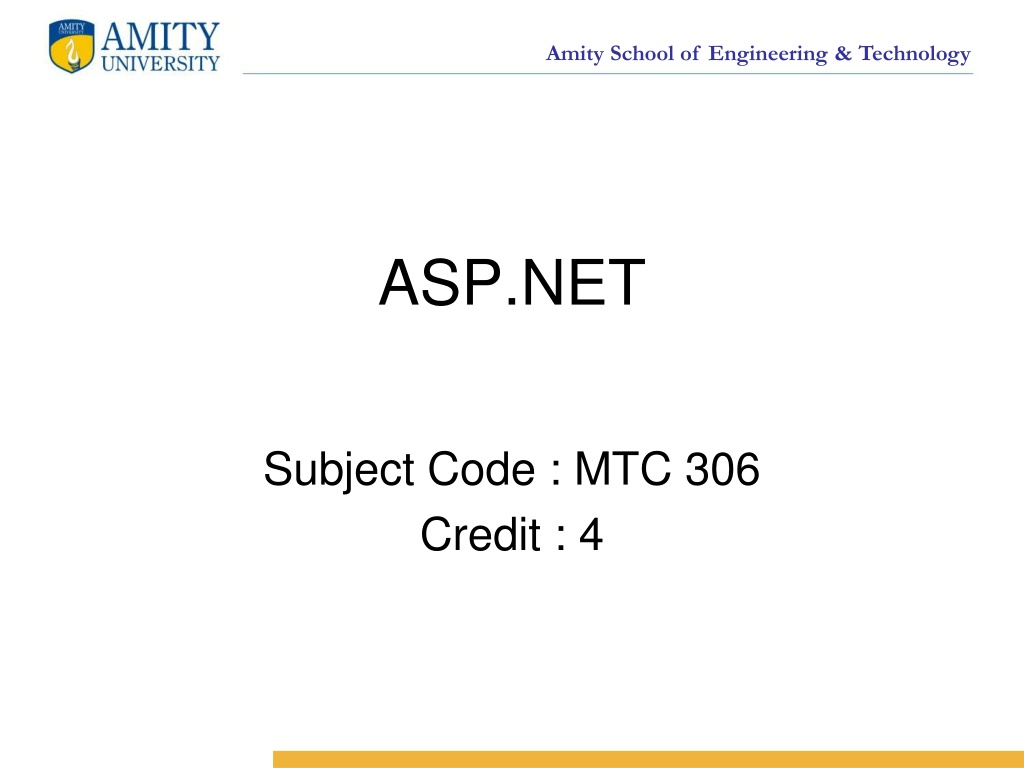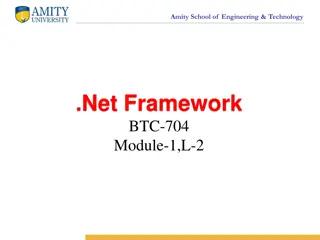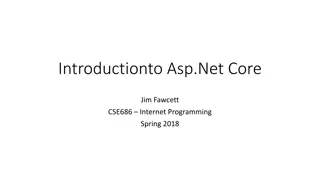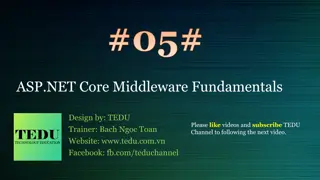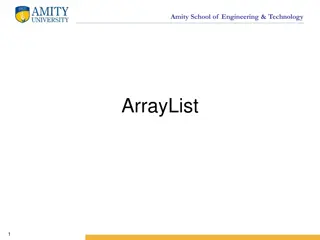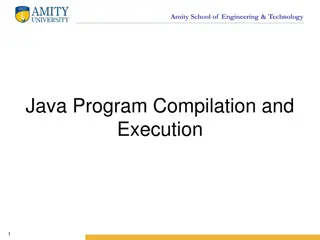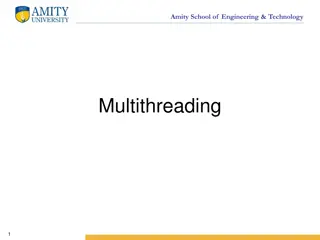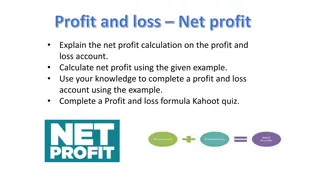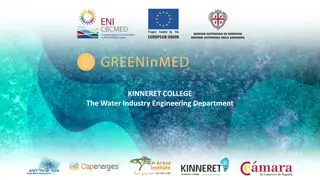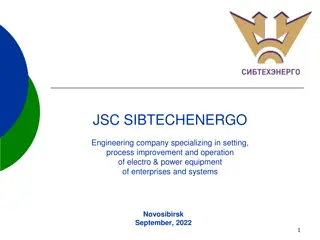Introduction to ASP.NET at Amity School of Engineering & Technology
ASP.NET is a specification by Microsoft for creating dynamic web applications, websites, and services. It offers benefits like component-based development, event-driven architecture, and extensible architecture. Amity School of Engineering & Technology emphasizes separate visualization from business logic to enhance web development efficiency and maintainability.
Download Presentation

Please find below an Image/Link to download the presentation.
The content on the website is provided AS IS for your information and personal use only. It may not be sold, licensed, or shared on other websites without obtaining consent from the author. Download presentation by click this link. If you encounter any issues during the download, it is possible that the publisher has removed the file from their server.
E N D
Presentation Transcript
Amity School of Engineering & Technology ASP.NET Subject Code : MTC 306 Credit : 4
Amity School of Engineering & Technology Module 1 Lecture 7 Introduction to ASP.NET 2
Amity School of Engineering & Technology What is ASP.NET ASP.NET is a specification developed by Microsoft to create dynamic Web applications, Web sites, and Web services. It is a part of .NET Framework. You can create ASP.NET applications in most of the .NET compatible languages, such as Visual Basic, C#, and J#. The ASP.NET compiles the Web pages and provides much better performance than scripting languages, such as VBScript. The Web Forms support to create powerful forms-based Web pages. You can use ASP.NET Web server controls to create interactive Web applications. With the help of Web server controls, you can easily create a Web application.
Amity School of Engineering & Technology ASP.NET Benefits Separate presentation from code Object-oriented approach Component-based development Event-driven architecture Code compilation Extensible architecture Built-in state management Many others (data binding, validation, master pages, etc.)
Amity School of Engineering & Technology ASP.NET Execution ASP.NET applications are executed via a sequence of HTTP requests and HTTP responses Client Web browser request ASPX pages The Web server executes the ASPX page and produce XHTML + CSS + JavaScript
Amity School of Engineering & Technology ASP.NET: How it Works? Traditional Web pages (static HTML) Consist of static HTML, images, styles, etc. Execute code on the client side Simple operations ASP.NET Web Forms Execute code on the server side Database access Dynamic pages Higher security level
Amity School of Engineering & Technology Separate Visualization from Business Logic Traditional Web development keep HTML and programming code in one file (PHP, ASP, ) Hard to read, understand and maintain Hard to test and debug ASP.NET splits the Web pages into two parts: .aspx file containing HTML for visualization "Code behind" files (.cs for C#) containing presentation logic for particular page
Amity School of Engineering & Technology Separate Visualization from Business Logic Class generated from the file does not derives directly from class Derives from class defined in the "code behind", where it is easy to add methods, event handlers, etc. Using "code behind" separates the presentation logic from UI visualization
Amity School of Engineering & Technology ASP and ASP.NET? The basic difference between ASP and ASP.NET is that ASP is interpreted; whereas, ASP.NET is compiled. This implies that since ASP uses VBScript; therefore, when an ASP page is executed, it is interpreted. On the other hand, ASP.NET uses .NET languages, such as C# and VB.NET, which are compiled to Microsoft Intermediate Language (MSIL).
Amity School of Engineering & Technology Difference Between ASP and ASP.net
Amity School of Engineering & Technology ASP ASP (Active Server Pages) is Microsoft s early foray into the server side scripting engines that were meant to dynamically create web pages as they are needed. An example of a dynamically created web page is an on-line calculator where you input two number and after you re done it presents you with the sum. Creating that in HTML would require a lot of pages, one for each possible result. But with ASP, you can write a single short script that can handle this easily. ASP has seen a fair share in the internet creating pages on the fly. But on January 5, 2002 Microsoft released the successor of ASP called ASP.NET
Amity School of Engineering & Technology ASP.NET ASP.NET aims to make the transition to web programming easier for those who are already knowledgeable in creating programs for Windows. ASP.NET also offered some improvements over its predecessor. Here are some of the advantages of ASP.NET over ASP
Amity School of Engineering & Technology ASP.NET ASP.NET takes advantage of the additional features in the .NET library allowing its pages to be coded in any of the other languages included in .NET. ASP.NET also has a very wide array of libraries and controls that can be used to build a web page quickly and easily. It also had a lot of the commonly used templates like menus. Error Handling has also been improved compared to ASP by making use of the try-catch blocks and exception handling.
Amity School of Engineering & Technology ASP.NET A compiled code format allowed ASP.NET scripts to perform faster during execution since it doesn t need to be compiled by the server when called. It also meant a lot less errors when it is already deployed since errors were easily found when you attempt to compile a script.
Amity School of Engineering & Technology ASP.NET One of the best improvements of ASP.NET is the use of a WYSIWYG (What You See Is What You Get) control creation system, that gave developers a GUI that helps them gain a quick visual feedback on the look of their page.
